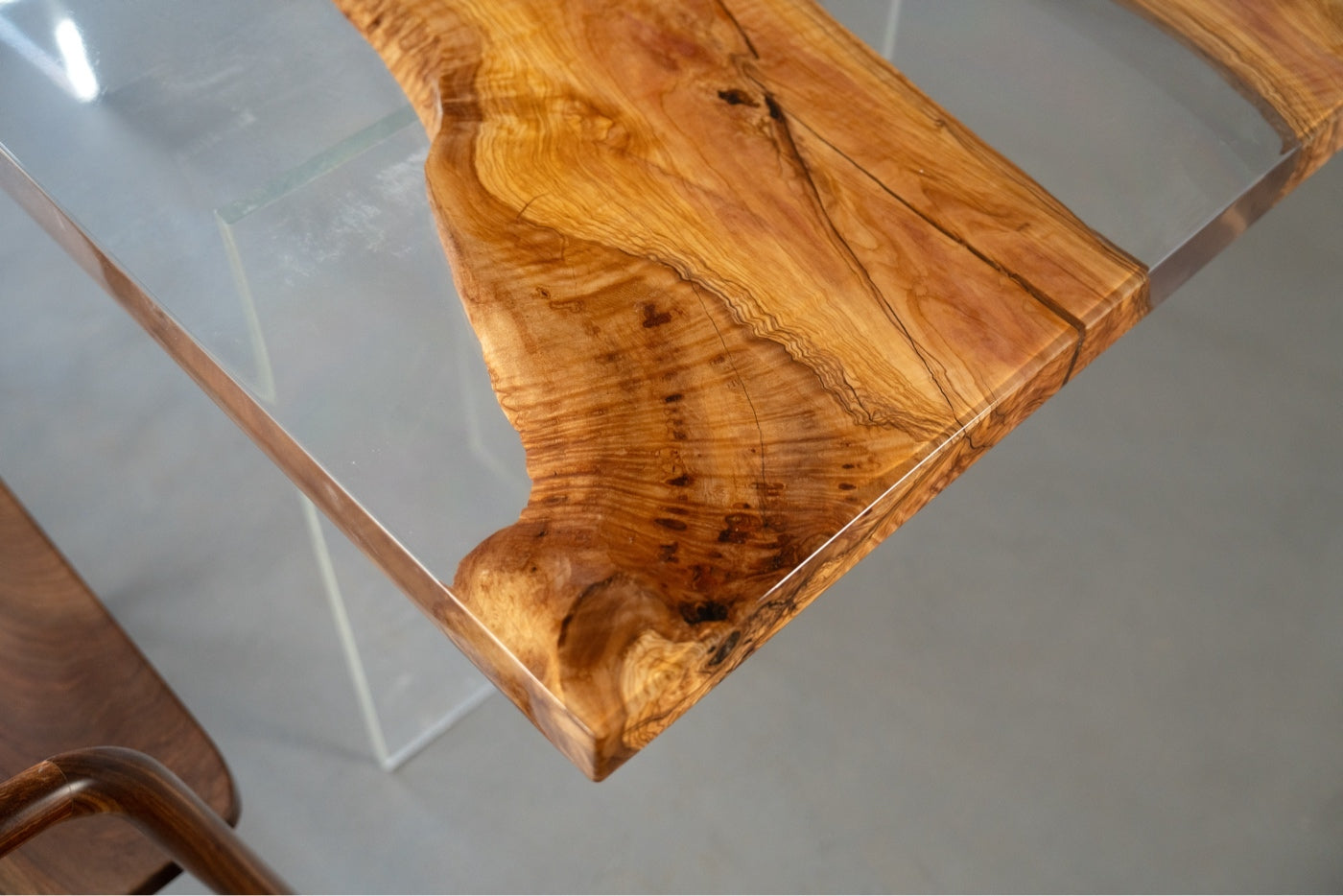Choosing the right wood is the foundation of creating stunning epoxy resin tables. The perfect wood selection enhances the resin's visual impact while ensuring structural integrity. This guide covers the top wood choices for epoxy tables, from beginner-friendly options to exotic showstoppers.
Top Wood Choices for Epoxy Resin Tables
1. Black Walnut
Why It's Ideal:
- Rich chocolate brown color with straight grain
- Excellent stability and workability
- Sapwood provides natural contrast
Best For:
- Classic, elegant furniture
- Dining tables and conference tables
Pro Tip:
- Pairs beautifully with any resin color
- Perfect for first-time resin table makers
2. Burr Oak
Why It's Ideal:
- Dramatic swirling grain patterns
- Distinctive organic texture
- Excellent durability
Best For:
- Statement pieces
- Rustic-modern designs
Special Consideration:
- Requires careful finishing to highlight burl patterns
- Best with clear or amber-tinted resin
3. Italian Olive Wood
Why It's Ideal:
- Warm golden tones with unique knots
- Natural imperfections add character
- Distinctive Mediterranean appeal
Best For:
- Kitchen islands
- Coffee tables
Pro Tip:
- Pair with gold or green-tinted resin
- Seal thoroughly to prevent oil interference
4. Ebony Wood
Why It's Ideal:
- Ultra-dense with deep black color
- Luxurious, high-end appearance
- Extremely durable
Best For:
- Accent pieces
- Luxury furniture
Note:
- Very expensive - best used in small quantities
- Pairs perfectly with metallic resins
5. Suar Wood
Why It's Ideal:
- Wild, organic grain patterns
- Excellent for natural designs
- Unique appearance in every piece
Best For:
- Free-form river tables
- Organic modern designs
Key Consideration:
- Must be properly dried to prevent cracking
- Ideal for blue or teal resin combinations
6. Poplar
Why It's Ideal:
- Most affordable option
- Takes stains and dyes well
- Consistent grain pattern
Best For:
- Painted resin designs
- Practice pieces
Bonus:
- Great for beginners
- Lightweight compared to other woods
Wood Selection Guide
| Wood Type | Best Resin Pairing | Price Range | Skill Level | Maintenance |
|---|---|---|---|---|
| Black Walnut | Any Color | $$$ | All Levels | Low |
| Burr Oak | Clear/Amber | $$$$ | Advanced | Medium |
| Italian Olive | Gold/Green | $$$ | Intermediate | Medium |
| Ebony | Metallic/Black | $$$$$ | Expert | Low |
| Suar | Blue/Teal | $$ | Intermediate | Medium |
| Poplar | Colored/Painted | $ | Beginner | High |
Key Selection Factors
-
Grain Pattern
- Straight grain (walnut) for clean looks
- Wild grain (suar) for organic appeal
-
Color Contrast
- Dark woods (ebony) make bright resins pop
- Light woods (poplar) work with any hue
-
Stability
- Kiln-dried wood prevents warping
- Moisture content below 12% is critical
-
Thickness
- 1.5-3" thick slabs provide ideal stability
- Thicker pieces allow for deeper resin pours
Professional Tips
✔ Always seal wood before resin application
✔ Bookmatch slabs for symmetrical designs
✔ Consider weight - some woods are extremely dense
✔ Start simple with walnut or poplar before exotics
✔ Invest in quality - better wood means better results
Conclusion
The perfect wood choice transforms a simple resin table into a functional work of art. While black walnut offers classic versatility, exotic options like burr oak and ebony create stunning showpieces. Beginners should start with poplar or walnut, while experienced makers can explore the dramatic potential of suar and Italian olive wood.
